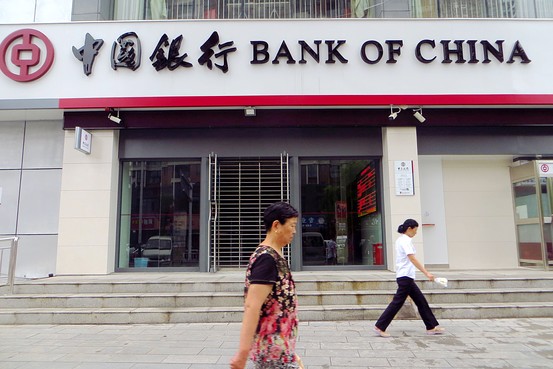BEIJING—China’s banks stepped up lending at an unexpected volume in September, in a sign that the government wants to boost credit to re-energize an economy that is losing steam.
Economists said the credit expansion suggests that the central bank is committed to more targeted easing measures. “This is likely to alleviate near-term fears of a hard landing,” OCBC economist Dongming Xie said.
Others called on the People’s Bank of China to do more, however, including a cut in the reserves that banks maintain with the central bank.
The People’s Bank of China said Thursday that Chinese banks issued 857.2 billion yuan ($138.3 billion) of new yuan loans in September, up from 702.5 billion yuan in August. Newly extended loans in September were higher than the 745 billion yuan forecast by a Wall Street Journal poll of 15 economists.
Total social financing, a broader measure of credit in the economy, came in at 1.05 trillion yuan in September, up from 957.4 billion yuan in August.
Expanded lending in recent weeks follows other efforts to keep credit flowing. China’s central bank last month injected 500 billion yuan into the nation’s five biggest state-owned banks after offering earlier in the year a 1 trillion-yuan credit line to China Development Bank, a state policy bank, to help renovate the country’s shantytowns. And in recent days, it has lowered the short-term rate on loans it makes to commercial banks.
Analysts said a modest decline in off-balance-sheet financing, including entrusted loans, trust loans and undiscounted bank acceptances, reflects efforts since April by the central bank to route more shadow banking activity into the main banking system.
“Shadow banking continues to shrink, although at a more modest pace,” said ANZ economist Li-Gang Liu.
Still, the rate of credit expansion, while still above the rate of nominal economic growth, remains low compared with past years, when a credit binge fueled double-digit economic growth, economists said.
Outstanding bank loans in September were 13.2% higher than a year ago—its slowest pace of growth since 2005—Capital Economics said, while outstanding total social financing was 14.6% higher, its lowest level since the global financial crisis.
“The data provides another indication that the economy continues to slow,” Société Générale CIB economist Klaus Baader said.
Some economists think the central bank should consider a broad cut in interest rates—a move it has so-far resisted amid concerns this could fuel overcapacity—rather than its recent piecemeal efforts to boost liquidity in the financial system.
September money-supply data comes amid recent softening in factory activity, investment, consumer prices and industrial production data.
The Chinese economy likely expanded 7.2% in the third quarter from a year earlier, down from 7.5% growth in the second quarter, according to a median forecast of economists polled by the Journal. Economists say China may miss its 2014 growth target of about 7.5%.
September credit figures also reflect new regulations aimed at stemming “window-dressing,” a practice whereby banks inflate short-term deposits at the end of the quarter to make their books look better, rules that should reduce credit volatility over time, economists said.
China’s broadest measure of money supply, M2, was up 12.9% at the end of September compared with a year earlier, higher than the 12.8% increase at the end of August, according to the central bank. China’s foreign-exchange reserves stood at $3.89 trillion at the end of September, down from $3.99 trillion at the end of June.
On Thursday, the Ministry of Commerce said China attracted $9.0 billion of foreign direct investment in September, up 1.9% from a year earlier. The figure was up from August’s $7.2 billion, which was 14% below August 2013 and the lowest level since July 2010. FDI in the January-September period fell 1.4% from a year earlier to $87.4 billion.
The ministry added that nonfinancial overseas direct investment by Chinese investors rose 21.6% in the first nine months of this year from a year earlier to $75.0 billion.
—Liyan Qi, Grace Zhu, Carlos Tejada contributed to this article.
Write to Mark Magnier at [email protected]
SOURCE: The Wall Street Journal, 17-19 October 2014.




